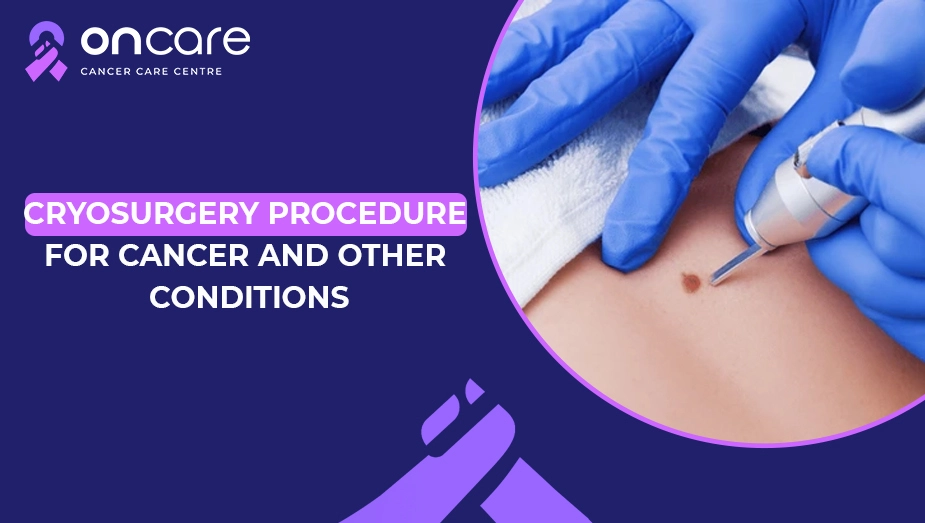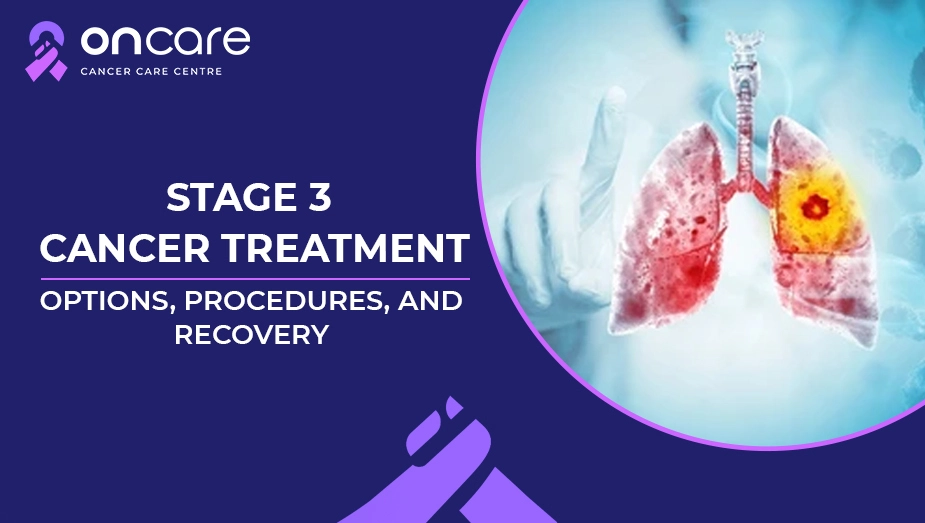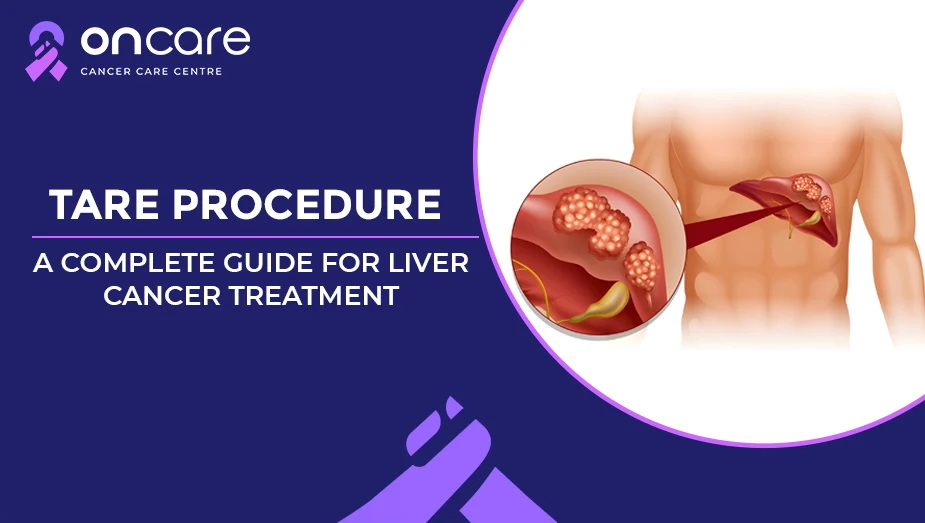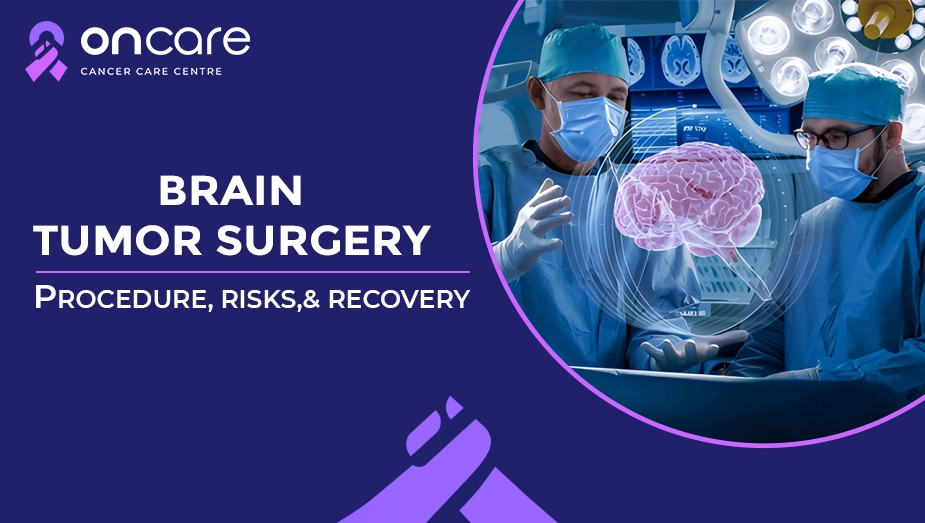Table of Contents
Cryosurgery Procedure for Cancer and Other Conditions

Cryosurgery, also commonly referred to as cryotherapy (cryoablation), is a medical technique that uses an extreme cold, typically via liquid nitrogen, argon gas, or a similar cryogen, to freeze and destroy abnormal tissues, including certain types of cancers or precancerous lesions in patients.
In this blog, we’ll explore how cryosurgery works, when it is used for both cancer and noncancerous conditions, what to expect from the procedure, and its benefits, risks, and patient advice.
What is cryosurgery?
Cryosurgery involves applying very low temperatures directly into the targeted tissues in the patient's body, causing cell death by freezing. During this procedure, a cryoprobe, a thin metal instrument, might be inserted into or placed against the abnormal tissue, internally or externally.
This probe is often cooled by a cryogen such as liquid nitrogen or argon gas, which helps to freeze the targeted tissue, forming an ‘ice ball’ which encompasses the lesion. The freezing damages cell membranes, often destroys the intracellular structures, and helps to freeze blood vessels supplying the lesion, which often leads to a cell death.
Often a freeze- thaw cycle is used, (freeze, thaw, freeze) to enhance the destruction of the abnormal tissue.
Where these procedure used:
These procedures are generally used in skin lesions (for example, precancerous or superficial cancers), using surface application of liquid nitrogen.
Internal lesions or tumors in organs like the liver, kidney, lung, and prostate, with the help of image guidance tests like ultrasound, CT, or MRI, to place the cryoprobe accurately.
How does it work?
During this cryosurgery procedure, a healthcare provider applies an extreme cold to abnormal tissues. While cells can’t survive this type of severe cold and die after the treatment. A health provider can use a few different substances to create the intense cold used in cryosurgery.
Some of these substances can include:
- Liquid nitrogen
- Liquid nitrous oxide
- Argon gas
What are the benefits of Cryosurgery?
Here are some of the benefits of cryosurgery, including:
Minimally invasive: For internal tumors, healthcare providers insert a cryoprobe (a thin, wand-like instrument) through a small incision or puncture in the skin. This will significantly reduce the bleeding, scarring, and pain that are typical with major open surgical procedures.
Faster recovery: Patients often experience less discomfort and can recover quickly from the procedure, in some cases, returning to normal activities with little or no down time.
Repeatable: Cryosurgery can be safely repeated if necessary, and it can also be combined with other treatments, like chemotherapy and radiation therapy.
Good for high-risk people: This is an effective cancer treatment option for patients who cannot undergo some conventional surgery due to their age or other health conditions.
Precise targeting: When treating some internal tumors, many doctors use image guiding techniques such as ultrasound, MRI to drive the cryoprobe and precisely target the abnormal tissue. It helps to protect surrounding healthy tissues from damage.
Risks and limitations of the Cryosurgery Procedure
Cryosurgery has several benefits, but it does come with some risks and limitations, including:
Here are some potential side effects/ complications, including:
- Pain, swelling, and bruising at the treatment sites
- Damage caused to nearby healthy tissue, organs, and nerves (especially if the probe is nearby any major organs/structures)
- For internal procedures: risks such as bleeding, infection, or organ-specific complications (e.g., bile duct damage in liver ablation) might occur.
- Some treatment procedures might carry severe risks like post-ablation syndrome (flu-like symptoms) after internal tumor ablation.
Limitations:
- Not suitable for all tumors: These treatments are not suitable for all tumors; their size, location, and accessibility matter. Tumors that cannot be clearly visualized or reached by a probe may not be amenable.
- Long-term effectiveness: For some cases, cryoablation therapies and its treatment outcomes are still limited.
- Insurance/coverage issues: In some cases, these treatments are often used as experimental in certain cancers.
Practical Patient Advice & What to discuss with your Doctor?
If you are being advised to get cryosurgery (or have recommended it), here are a few things to keep in mind, including:
Before cryosurgery procedure:
- Ask questions such as ‘Is my tumor reachable by a cryoprobe?’ Or are imaging and guidance facilities available?
- Try to understand any types of prerequisites which might include medications such as blood thinners, fasting, baseline testing.
- Ask your healthcare team about ‘how to do cryosurgery for your type of tumour’ and what types of treatment outcomes have achieved.
During the procedure:
- Ask questions such as ‘Will I be given local anesthesia or local/regional?
- Clarify all of your doubts, like how many probes will be used during the procedure, how the freezing will be monitored, and what the risks are attached to nearby tissues.
- Try to understand the treatment plan. If not all tumors are destroyed in the first attempt, will you need a repeat session or additional therapy?
After the procedure:
- Understand recovery expectations: Ask your healthcare team, "When can I resume normal physical activities? Is pain/discomfort normal?"
- What signs to watch for: Side effects like infection, fever, increased redness, discharge, bleeding, unexpected pain, nerve symptoms, and numbness.
- Follow-up plan: Consult your doctor, and get your imaging tests, lab tests, and checkups.
- Ask your doctor, ‘How will you know if the tumor has gone or spread?’ Additionally, ask about combining therapies like cryosurgeries with other therapies like chemotherapy, radiation, and immunotherapy, if needed.
Consult Today
Cryosurgery represents a valuable tool in the treatment modalities for both cancerous and non-cancerous conditions. These offer a minimally invasive, relatively well-tolerated option, especially for patients who cannot undergo more invasive surgeries or whose tumors are in challenging locations.
If you or any loved ones of yours are being recommended for cryosurgery, then ask relevant questions about the procedure, understand the risks and benefits, and weigh it alongside other treatment options.
At Oncare, we offer premium-quality cancer treatments, including advanced cancer surgeries at an affordable price range with an experienced cancer specialist consultation.
If you or any loved ones of yours are diagnosed with cancer, then visit Oncare Cancer Center and book an appointment with our experienced cancer specialist consultation. Get an estimated cost of your cancer treatments today!
Frequently Asked Questions
Here are some of the cancers that are treated with cryosurgery, including:
- Skin cancer
- Prostate cancer
- Liver cancer
- Lung cancer
- Bone cancer
- Kidney cancer
- Breast cancer
- Eye cancer
Here are some of the complications of cryosurgery, including:
- Bleeding, cramping or pain after cryotherapy around the cervix
- Bone fractures
- Nerve damage leading into loss of feeling
- Swelling, scarring, and skin infection
Consult your doctor if you have any signs of an infection after the procedure.
These signs may include:
- Redness
- Pus
- Unexplained fever
Book an Appointment
Related Blogs

Stage 3 Cancer Treatment: Options, Procedures, and Recovery
Discover more about stage 3 cancer treatment and what to expect during treatments and its recovery and life after cancer treatments, outlook, and hope for stage 3!

TARE Procedure: A Complete Guide for Liver Cancer Treatment
Discover more about the TARE procedure for liver cancer treatment, who needs the TARE procedure, what to expect during the procedure, and the benefits and side effects of the TARE procedure!

Brain Tumor Surgery: Procedure, Risks, and Recovery
Learn what to expect from brain tumor surgery, including the procedure, recovery, risks, and when surgery is needed. Get expert tips for better outcomes.

Biopsy Procedure: Step-by-Step Guide for First-Time Patients
Discover more about the biopsy procedure, types of biopsy, a step-by-step guide to the biopsy procedures, post-procedure care, and tips for first-time patients.

